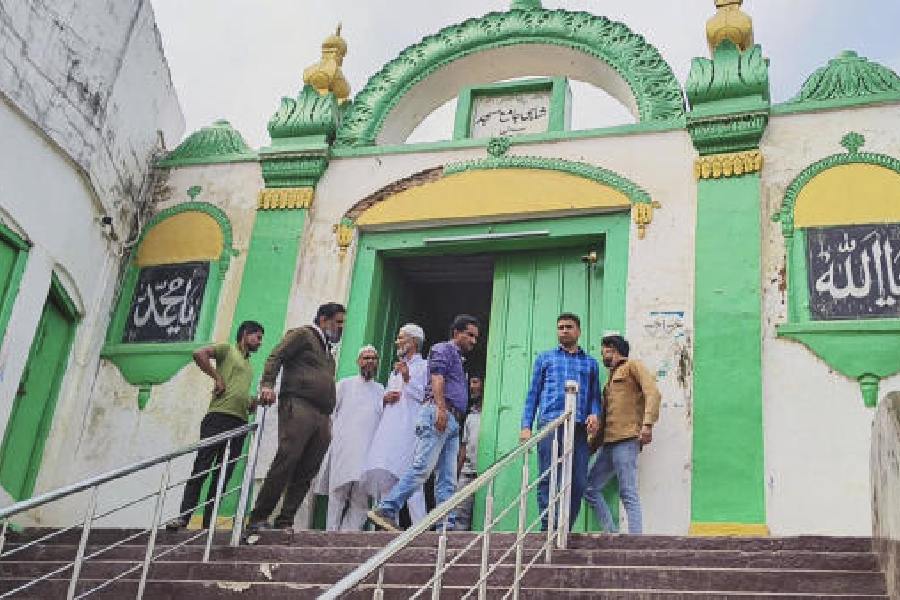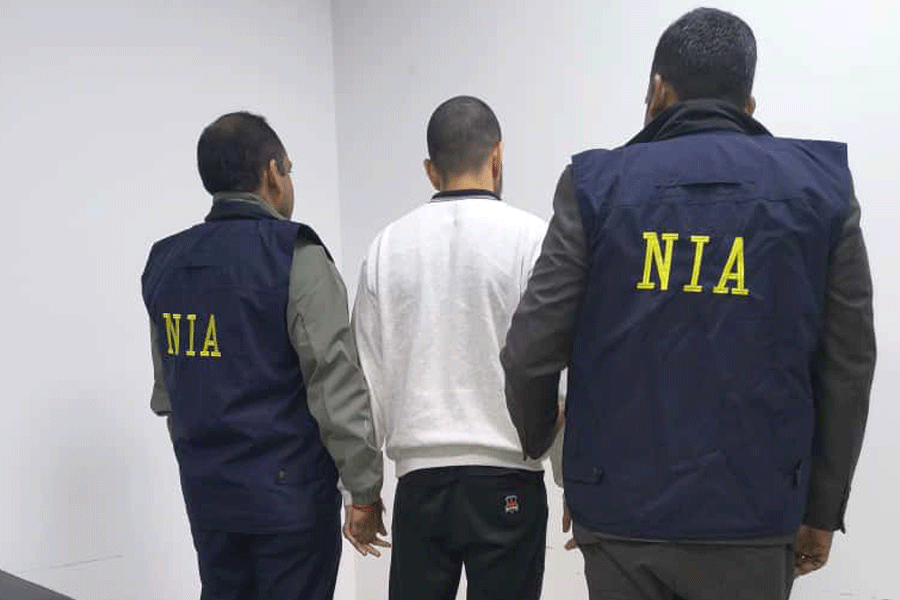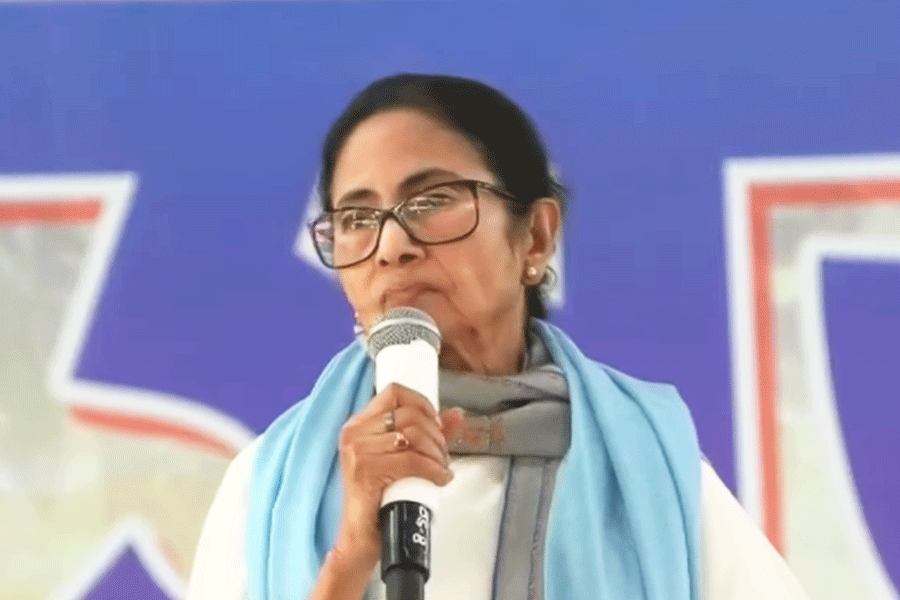 |
A thin, bespectacled young man with slightly unruly hair, dressed in kurta-pyjama and puffing a pipe, leans against a brick wall, looking at a sheaf of paper in his hands. A thoughtful man, perhaps in his early forties, his hair and beard still dark, looks tentatively at the camera with a child’s vulnerability in his eyes. Another bearded man, slim and insouciant, in a red sweater and a light jacket, poses for a picture as though he is just about to burst into laughter. Youth and intelligence are obvious in his expression, his stance almost imperceptibly, and yet unmistakably, challenging. A group of men sitting around in a circle of chairs on a sunlit lawn, talking animatedly and drinking nimbupani from straws, while a balding, bespectacled American, with astonishing black whiskers covering his cheeks, gesticulates mid-sentence. On the projector screen, passing like a dream — Rajni Kothari, Ashis Nandy, Shiv Viswanathan, Bernard Cohn. When Kothari, now in his eighties, is brought in to the room in a wheelchair, we all stand up to applaud him, and I find myself crying as I clap, reminded in no uncertain terms of the relentless, insatiable appetite of Time.
November 17, 2012, at 29 Rajpur Road was an emotional day for many people. Everyone who had ever been associated with the Centre for the Study of Developing Societies was invited to attend the Centre’s 50th birthday party that day. Centre denizens came from near and far, and met one another after decades. There was Abha Khullar, the first secretary the Centre ever had, still as feisty and full of life as she was remembered to have been back in the mid-1960s. There was Sukhdas, of Sultanpur, UP, toothless, tufted and dhoti-clad, the Centre’s original gardener, who knew every tree and bush on the premises because he had planted them all with his own hands half a century ago.
His curly hair now an elegant silver, there was Sudhir Kakar, the psychoanalyst whose pathbreaking work on desire, pleasure, ecstasy and other erotic and libidinal aspects of human experience transformed the study of Indian society and culture. The pioneers of history, politics, sociology and anthropology in India — Sudhir Chandra, D.L. Sheth, Ramashray Roy, T.N. Madan, Ghanshyam Shah, J.S. Oberoi, Suresh Sharma, Harbans Mukhia, Romila Thapar — the teachers of our teachers and the founders of disciplines one spotted on the lawns that night was just breathtaking. Old adversaries, old friends, everyone came together to toast an institution that has provided the space for dialogue, argument, dispute and innovation in the social and human sciences in India from Nehru’s times into our own.
But after the party, the reckoning. CSDS’s golden jubilee provoked a spate of articles in newspapers and magazines, as well as TV shows and panel discussions, including one at the Centre that tried to look at the relationship between the life of the mind and the idea of the public from a variety of perspectives. CSDS might indeed be in good shape, with long-running programmes in the study of elections and democracy (Lokniti), new media, emerging technologies and urban culture (Sarai), enormous banks of data, as well as analytical work on violence, political thought, Indian languages, cinema, contemporary culture, Islam, education, social movements, and knowledge systems in the non-West.
Yet, it cannot be denied that social science research in India, whether at the ICSSR-funded research institutes or at the major public universities, is in a state of crisis that has an impact on teachers, students and researchers alike, and makes both pedagogical and research practice increasingly difficult for everyone. While celebrating the considerable achievements of scholars based in CSDS over the last half-century, the big birthday also necessitates a broader public debate on the alarming condition of Indian institutions.
Scholars of my generation find that earlier distinctions — and the sometimes acrimonious debates they entailed — do not really make sense anymore, given our experience and our circumstances. Rigid dichotomies between teaching and research, Indian and foreign degrees, and public engagement and solitary study have slowly but surely given way to new dilemmas. Three sets of issues have assumed the highest priority in any conversation about knowledge practices and higher education in India of the 2010s. First, the place of affirmative action or reservations policy; second, the looming question of the privatization of this sector; and third, the future (if there is one) of the humanities, social sciences and liberal arts in India. These are the burning questions of the day, and the quarrels of even a decade ago no longer seem that important, given the unresolved political tensions and policy disarray surrounding these three crucial, critical matters.
Many of the qualities we associate with the first 25 years of CSDS — a pioneering spirit, criticism of the state, anti-establishment positions, a refusal of hegemonic theoretical models originating in Western scholarship, vigorous dissent both inside the institution and relative to the larger academy, an engagement with other countries and cultures of the then so-called ‘Third World’, healthy ideological scepticism with respect to both the Left and the Right, vanguardist energy — these were, to some extent, features of intellectual life in a new nation, in a context where institutions, disciplines and debates were all being built from the ground up. A certain mainstreaming and stabilization of the Centre was inevitable over time — and for the most part, arguably, it is not such a bad thing to ‘grow up’ and ‘settle down’ into a steady productivity.
Those who have seen the ups and downs of the Centre’s life tell of days when salaries could not be paid, broken equipment could not be repaired, and financial stress hampered everyday functioning. Others describe the turmoil wreaked by political pressure and state interference on the lives and careers of the Centre’s faculty. But junctures of significant political crisis in the history of post-colonial India — the Emergency, Delhi 1984, Ayodhya and Bombay 1992-23, Gujarat 2002 — in many ways brought out the best of the Centre. Whatever its flaws and problems, CSDS could always be relied upon to articulate a robust critique of power and especially of power when it is turned against the very people from whom it ought to derive its legitimacy. Away from the glare of the controversies that engulf the large universities, especially in Delhi, CSDS has also quietly but steadily increased its graduate teaching quotient in recent years.
Enormous efforts of collective introspection, public initiative and far-seeing leadership resulted in the creation of institutions like Santiniketan and Sabarmati a century ago in the India of Tagore and Gandhi, and of institutions like CSDS and its many regional cousins in Nehru’s India half a century ago. The time has surely come for a fresh look at the kinds of institution of higher learning we need and want in this country in the coming decades. The first thing to note is that the truly enabling institutions that flourish for a long time and also foster most creative thinking in all those who come into their precincts inevitably arise not around men and women who are self-important, self-aggrandizing, ambitious, ruthless and needy for personal loyalty, but around mavericks, visionaries, loners and outliers.
The charisma of such figures flows from the force of their ideas and not their will to power or their hunger for acceptance. At the core of a successful university or research centre is surely a confluence of interesting minds and an ethos of free, fair and frank argumentation — and in this way an institution of learning is fundamentally different from say a successful company or corporation. It is these qualities of uncompromising independence and an openness to disagreement, or their lack, that can make or break an institution. Even funds, patronage and infrastructure are less important, in the final analysis, than the human and intellectual foundations of any long-lived and self-renewing institution.
On CSDS’s birthday party, all eyes were on Ashis Nandy, 75, whose name has become associated with the Centre perhaps to a greater extent than even his most eminent peers. He wore a deep blue linen hand-stitched coat, presented to him, he said, by one of his many Chinese admirers (his work is multiply translated and widely read in China, it turns out). In his address that evening he recalled that when he first came to the Centre as a young man, Rajni Kothari said to him that to live the life of the mind one must have a sense of amazement (‘achambho’ in Gujarati) at the variety and complexity of the world. If you lose the ability to remain sensitive to the wondrousness of reality, and the humility to recognize that you do not know all the answers, you cannot be an intellectual of any worth.
Ashis-da received many compliments that day. He was called “a national treasure” in print, which made him groan in embarrassment (“I will never live that down!”), and “lovable” in person, which made him laugh out loud (“I never thought I would hear such an absurd thing said about me!”). Late in the celebrations, I was standing beside him at the dessert section of the dinner buffet. “You are the spider,” I said to him, “and this is the web you have woven.”
He looked up from the four different kinds of sweets laid out in dishes on the white tablecloth to the lawns and courtyards of 29 Rajpur Road, abuzz with close to 400 guests spanning three generations of Indian academia. His wispy white beard was nicely set off by the dark blue of his Oriental coat. He had his arms behind his back and his hands clasped together in the pose of an idle bystander that all those who are familiar with him would recognize immediately and know not to believe, because it conceals his deep curiosity about, and alert attentiveness to, everything in his vicinity. He nodded and smiled a little, rather like a Chinese Buddha — amused, compassionate, detached, sceptical.










